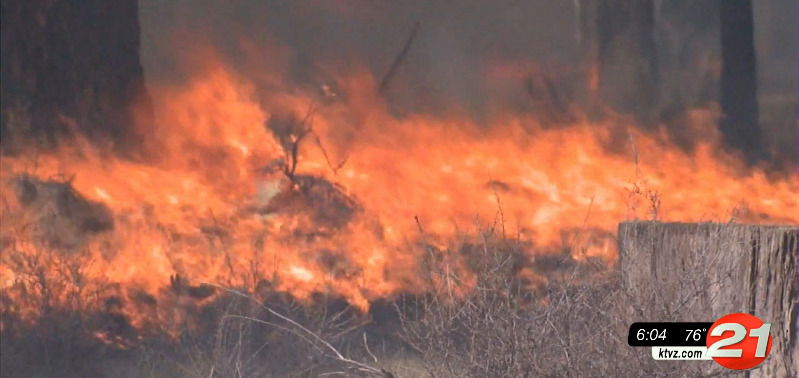You can make a difference during Wildfire Awareness Month

SALEM, Ore. (KTVZ) -- The Office of State Fire Marshal wants to remind Oregonians as Wildfire Awareness Month begins that YOU are the greatest resource in protecting homes and neighborhoods. With some simple steps, you can protect your home and community from wildfire. Now is the time to prepare your home and your property for the 2021 fire season.
Remember to keep your defensible space defined, keep grass and weeds cut low and always be prepared to respond to wildfire. With this in mind, the Office of State Fire Marshal urges you to take a look around your property in the "home ignition zone," where glowing embers can ignite spot fires and vulnerable areas like decks, patios, and fences that can spread flames to your home.
The most significant risk of structures catching fire during a wildland fire event is from the advancing ember shower that can reach your property long before an actual flame front.
Good defensible space can not only prevent ember ignition of your home, but it can also prevent the flames from reaching your home at all. We can reduce the vegetation within 30 feet of home and eliminate flammable plants from touching our home.
"Wildfire safety starts with all of us and our property. Now is the time to take action to prepare our homes, families, and communities for wildfires by starting on our property before there is smoke on the horizon," says Mariana Ruiz-Temple, state fire mMarshal.
To address the risk of wildfire, the Office of State Fire Marshal recommends the following steps that people can take right now to help protect themselves against the upcoming fire season:
- Clear roofs and gutters of dead leaves, debris, and pine needles that could catch embers
- Ensure your roof is in good repair
- Move any flammable material away from exterior walls, i.e., mulch, flammable plants, leaves and needles, firewood piles
- Remove anything stored underneath decks or porches
- Give your home a non-combustible area where a fire in the landscape can't reach your home, strive for a 5-foot perimeter
- Keep lawns and native grasses mowed to a height of four inches.
- Remove ladder fuels (vegetation under trees) so a surface fire cannot reach the crowns. Prune trees up to six to ten feet from the ground; shorter trees do not exceed 1/3 of the overall tree height.
With firefighting resources doing their best to tackle large wildfires, communities that focus on neighborhood-wide Firewise ideals can not only increase an individual home's survival but the whole neighborhood's.
"A neighborhood-wide approach can increase the chances of homes surviving a wildfire. By taking a neighborhood approach to defensible space and community preparedness, you are also protecting our firefighters," Ruiz-Temple explains. "Ultimately, individuals taking the right steps on their property before fire season make firefighters safer and more effective," she adds.
Creating whole neighborhoods that are holistically preparing for wildfire is a large piece of Fire Adapted Communities. A fire-adapted community acknowledges and takes responsibility for its wildfire risk by taking actions to address resident safety, homes, neighborhoods, businesses and infrastructure, forests, parks, and open spaces all Oregonians enjoy.
For more defensible space tips, visit: https://www.oregon.gov/osp/programs/sfm/Pages/Wildland-Urban-Interface.aspx
During May, a new wildfire prevention topic will be introduced each week to help homeowners and recreationists learn how to prevent their outdoor activities from sparking the next wildfire. For more wildfire preparedness and prevention information, visit the websites for Keep Oregon Green at https://keeporegongreen.org/, the Oregon Department of Forestry's restrictions map https://www.oregon.gov/odf/fire/Pages/fireprevention.aspx, OSU's new Fire Program at https://extension.oregonstate.edu/fire-program and OSU's Oregon Wildfire Risk Explorer tool: https://oregonexplorer.info/topics/wildfire-risk?ptopic=62